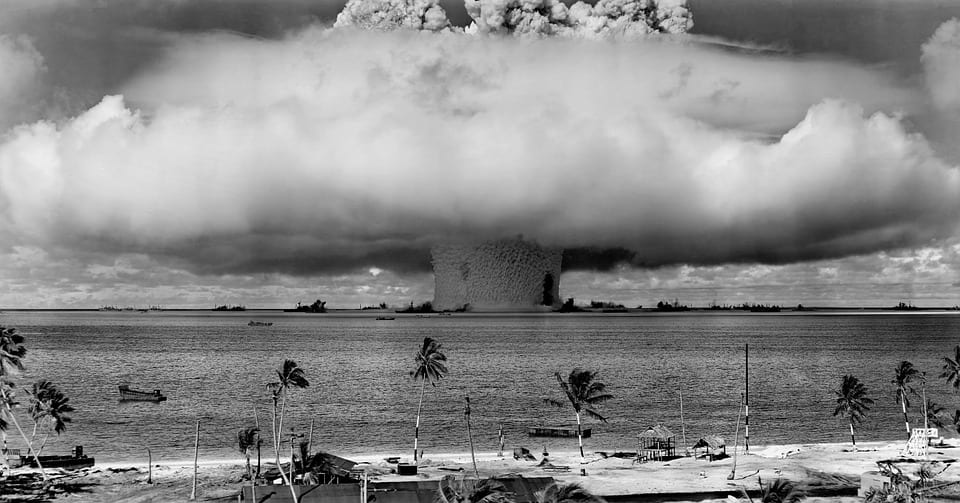Consider this: even though the US (and other countries like Russia and Pakistan) have access to weapons that max out at 1.2 megatons, they can also be scaled back to as little as .3 kilotons in order to be used as “tactical” nukes.
That’s right. If a bomb less than 10 kilotons is dropped on a good-sized city (for comparison, the bomb dropped on Hiroshima was about 15 kilotons), it is possible that hundreds of thousands of people could survive the explosion. But how many survive the aftermath?
If you want to be one of the long term survivors (assuming you survive the initial blast), the first thing you’ve got to do is keep your wits about you.
Next – and most importantly – you’ve got to find a place to hide from the fallout.
But it’s got to be the right place.
Fallout consists of bomb material, soil, and other vaporized, radioactive debris that is sprinkled across the landscape by the wind – whichever way it blows. The fallout is what increases radiation exposure in the surrounding area, and it can lead to acute radiation sickness, which is often deadly, but also to a host of long term health issues, including many types of cancer. The fallout is ash, it’s dust, it’s in the air, it gets in water – it’s basically everywhere, so it is very hard to avoid if you’re close to the blast.
According to this government infographic, the best place to lay low while the dust and ash blows past is in a tall building with underground rooms made from concrete and lacking windows. Basically, if you live in the Midwest you’ve got a leg up, because we’ve got basements and plans for tornado shelters that would look similar.
Limiting your radiation exposure is key, so you’ll need to have a plan to get to your shelter quickly. Unfortunately, if you’re too close to the initial blast, it may be best to stay where you are, regardless.
If you want to read up on all of the science and calculate whether you’ll need to stay or go, IFLScience has it all for you here.
If you’re looking for a down and dirty list, here you go.
#1. Have a plan.

Photo Credit: FEMA
Does your house have an underground, concrete basement? Is there an apartment building or other spot nearby that would work? It’s important to know where you plan to shelter from the initial fallout before it happens, so you can make a quick decision when it does.
#2. Find out how far you are from the blast site.
This is important. If you’re too close, you’re going to be better off staying inside even a less-than-ideal shelter for the first hour or so. If you have time and your shelter is close, you might be able to make a run for it before hunkering down.
#3. Pick up some provisions when you venture out.
If you do have to move, either at the beginning or after an hour or so, you can grab some beer or soda at the local pit stop. A 1950s study suggests they would survive a radioactive blast with no ill effects.
#4. Wait to be evacuated.
After you get to your preferred shelter, stay until officials come to evacuate you to a safer area. Emerging before the worst of the fallout has settled could undo everything you’ve been waiting and working for – not to mention that officials are going to know the best place to re-settle while things get back to normal.
So, there you go! As with all plans for catastrophic events (please tell me I’m not the only one who has a zombie apocalypse go-bag!), it’s important to know what you’re going to do ahead of time. In the moment, you’re going to be panicking (or trying not to become the first casualty on the real life Walking Dead), and preparation means you can get shit done even if your mind is elsewhere.
May the odds be ever in your favor.
(h/t: IFLScience)
We know you can choose a lot of sites to read, but we want you to know that we’re thankful you chose Did You Know.
You rock! Thanks for reading!






